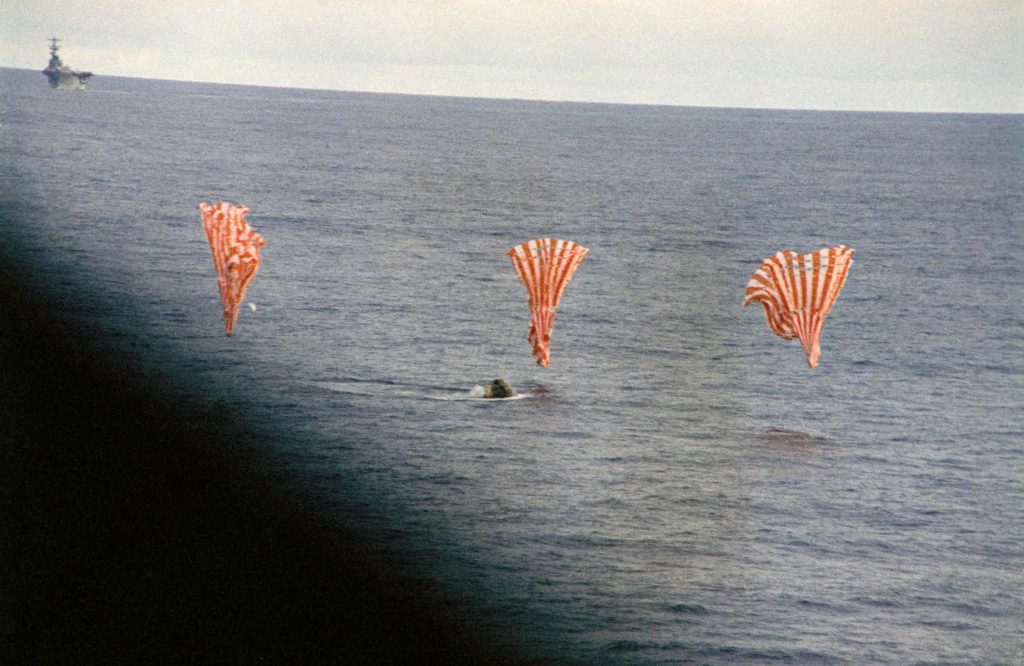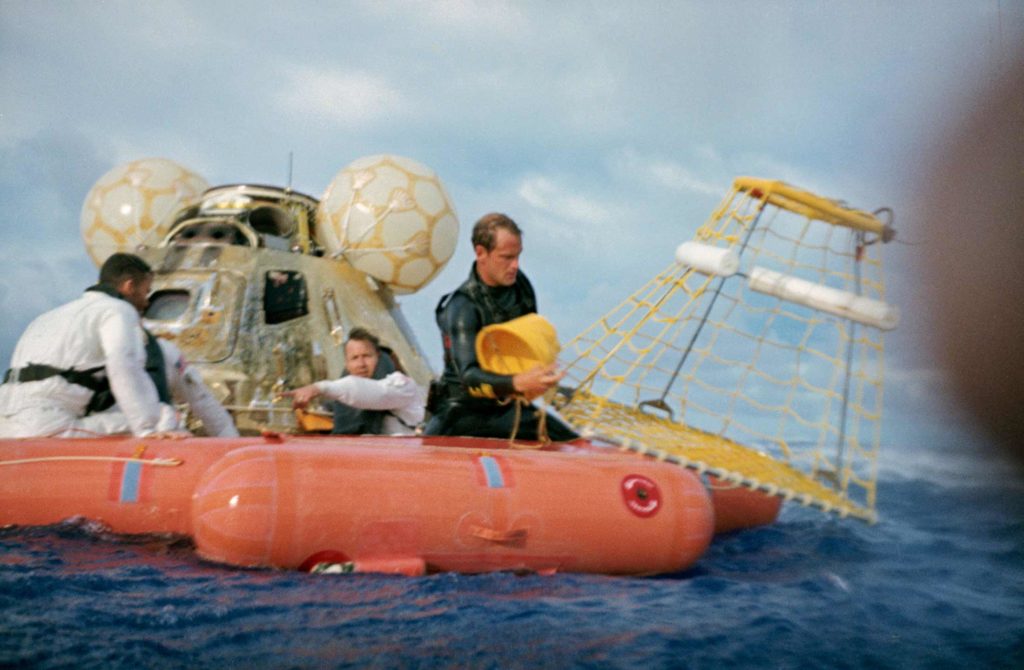Proudly built on Campaign Pro, the website builder for people who’ve got something important to say.
The story of Apollo 13
Okay, Houston, we’ve had a problem here.
Apollo 13 was the seventh manned mission in the American Apollo space program and the third intended to land on the Moon.
The craft was launched on April 11, 1970, but the lunar landing was aborted after an oxygen tank exploded two days later, crippling the Service Module upon which the Command Module depended.
Despite great hardship caused by limited power, loss of cabin heat, shortage of potable water, and the critical need to jury-rig the carbon dioxide removal system, the crew returned safely to Earth on April 17.
The Apollo 13 crew
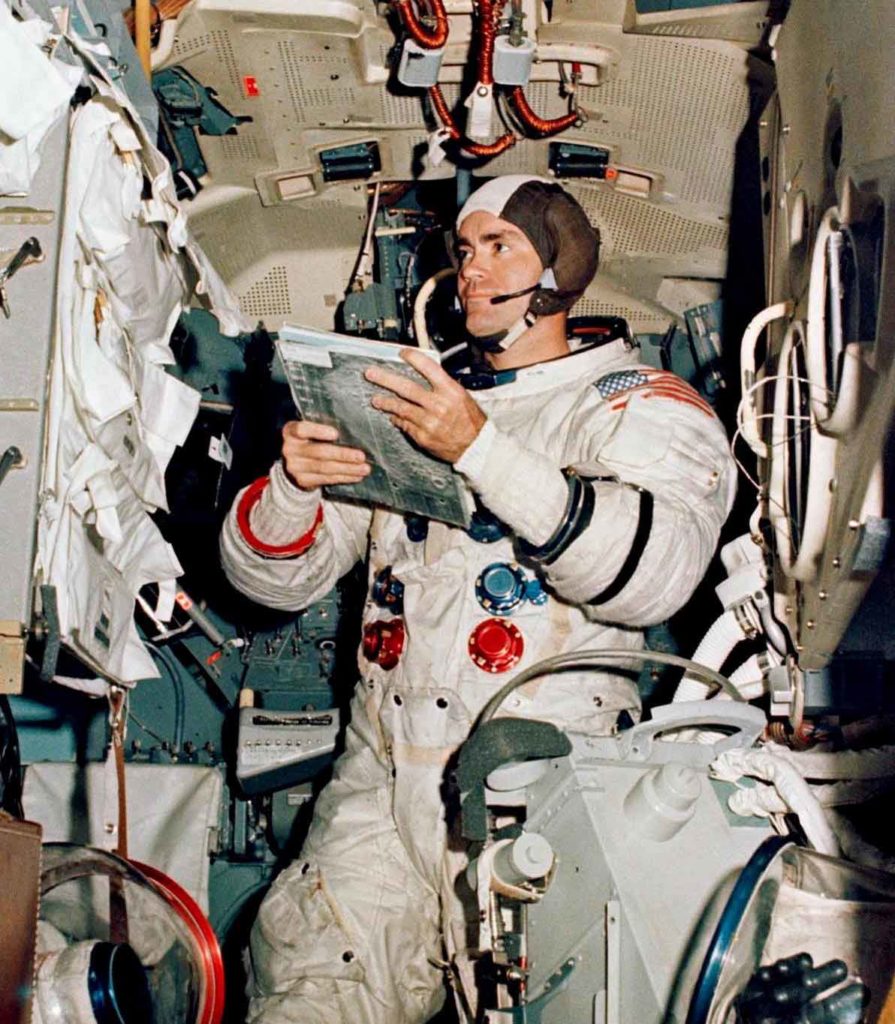
Fred W. Haise
Lunar Module Pilot
John L. “Jack” Swigert
Command Module Pilot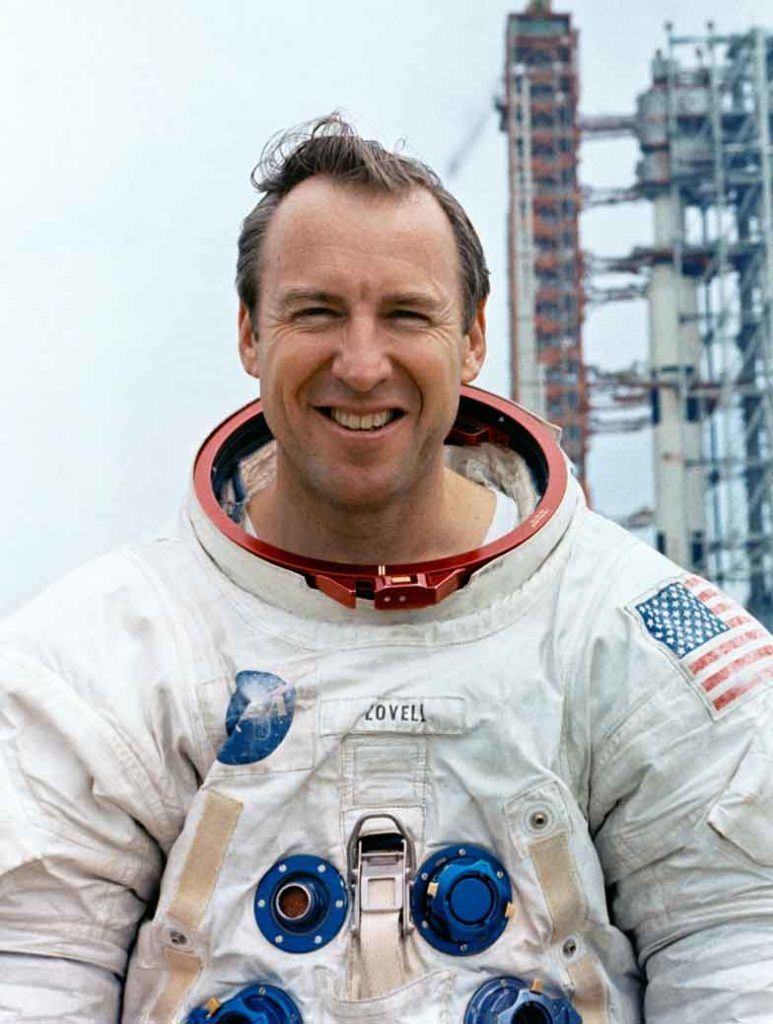
James A. Lovell
Commander
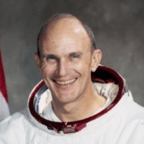
Ken Mattingly was originally intended as the Command Module Pilot
Photo credits: NASA
Seven days before launch, the Backup Lunar Module Pilot, Charlie Duke, contracted rubella from one of his children. This exposed both the prime and backup crews, who trained together.
Mattingly was found to be the only one of the other five who had not had rubella as a child and thus was not immune. Three days before launch, at the insistence of the Flight Surgeon, Swigert was moved to the prime crew.
The Apollo 13 flight directors
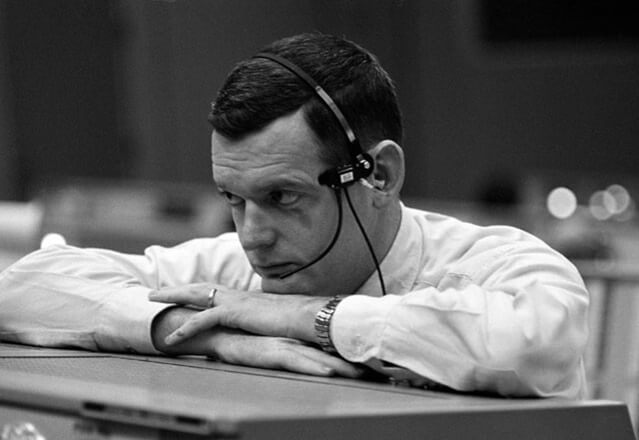
Glynn Lunney
Black Team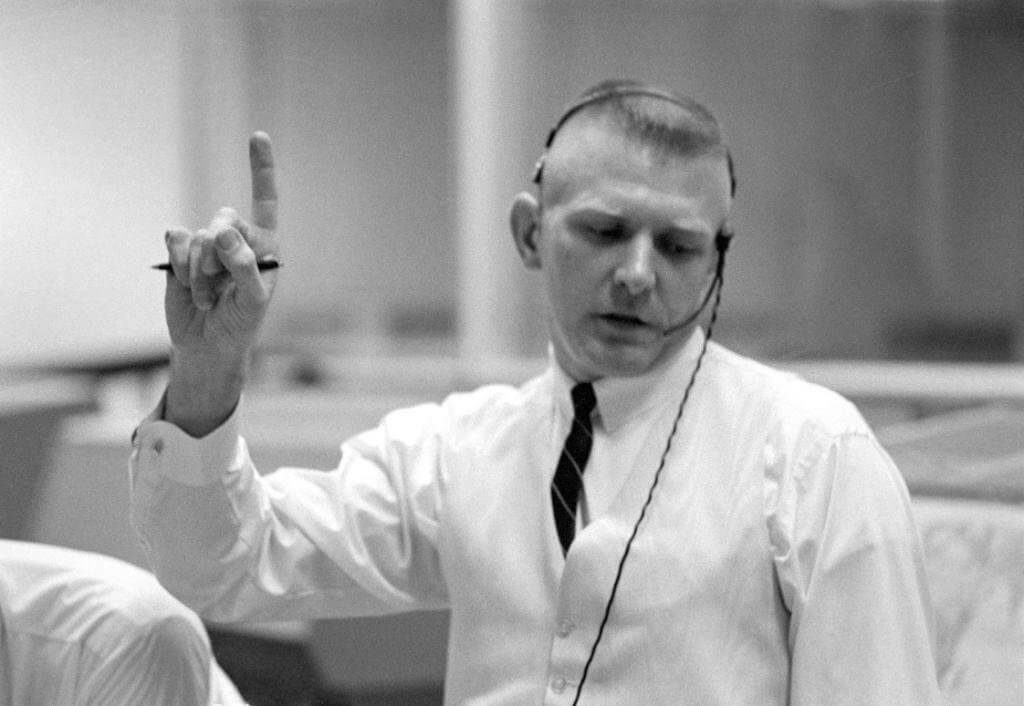
Gene Kranz
White Team
Milt Windler
Maroon Team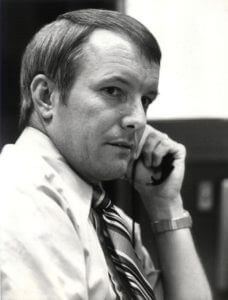
Gerry Griffin
Gold Team
Photo credits: NASA
Kranz’s team was on duty when part of the Apollo 13 service module exploded and they dealt with the initial hours of the unfolding accident.
His “White Team”, dubbed the “Tiger Team” by the press, set the constraints for the consumption of spacecraft consumables (oxygen, electricity, and water) and controlled the three course-correction burns during the trans-Earth trajectory, as well as the power-up procedures that allowed the astronauts to land safely back on Earth in the command module.
He and his team, as well as the astronauts, received the Presidential Medal of Freedom for their roles.
Mission objective
View of Fra Mauro taken from lunar orbit on the Apollo 12 mission
Photo credit: NASA
The Apollo 13 mission was to explore the Fra Mauro formation, or Fra Mauro highlands, named after the 80-kilometer-diameter Fra Mauro crater located within it. It is a widespread, hilly selenological area thought to be composed of ejecta from the impact that formed Mare Imbrium.
The Apollo 13 mission was launched at 2:13 pm EST (7:13 pm UTC), April 11, 1970 from launch complex 39A at Kennedy Space Center, Florida. By this time in the Apollo program the launches had become fine-tuned, but each mission had some technical issues after launch. It was hoped Apollo 13 would go smoother than prior missions.
View of Saturn V rocket Apollo 13 launch
Photo credit: NASA
Oxygen tank explosion
Approaching 56 hours into the mission, Apollo 13 was approximately 330,000 km (205,052 miles) from Earth en route to the Moon. Approximately six and a half minutes after the end of a live TV broadcast from the spacecraft, Haise was in the process of powering down the LM, while Lovell was stowing the TV camera, and Houston flight controllers asked Swigert to turn on the hydrogen and oxygen tank stirring fans in the Service Module, which were designed to destratify the cryogenic contents and increase the accuracy of their quantity readings.
Mission Operations Control Room during Apollo 13’s fourth television transmission, on the evening of April 13, 1970. Lunar Module Pilot Fred Haise Jr. is seen on the screen.
Photo credit: NASA
Almost two minutes later, the astronauts heard a “loud bang” accompanied by fluctuations in electrical power and firing of the attitude control thrusters. The crew initially thought that a meteoroid might have struck the Lunar Module.
Credit: Nasa
The number-2 oxygen tank, one of two in the Service Module, had exploded. Damaged Teflon insulation on the wires to the stirring fan inside oxygen tank 2 allowed the wires to short-circuit and ignite this insulation. The resulting fire rapidly increased pressure beyond its 6.9 MPa limit and the tank dome failed, filling the fuel cell bay with rapidly expanding gaseous oxygen and combustion products. It is also possible some combustion occurred of the Mylar/Kapton thermal insulation material used to line the oxygen shelf compartment in this bay.
Immediate issues caused by the oxygen tank explosion
Communication problems
Battery power
Oxygen supply problems
Spacecraft tumbling
The damage to the Service Module made safe return from a lunar landing impossible, so Lead Flight Director Gene Kranz ordered an abort of the mission.
The existing abort plans, first drawn up in 1966, were evaluated; the quickest was a Direct Abort trajectory, which required using the Service Module Propulsion System engine to achieve a 1,853 m/s delta-v.
Although a successful SPS firing at 60 hours ground elapsed time would land the crew one day earlier, the large delta-v was possible only if the LM were jettisoned first, and since crew survival depended on the LM’s presence during the coast back to Earth, that option was “out of the question.”
Six astronauts and two flight controllers monitor the console activity in the Mission Operations Control Room. When this picture was taken, the Apollo 13 moon landing had already been cancelled, and the Apollo 13 crew men were in trans-Earth trajectory attempting to bring their damaged spacecraft back home.
Photo credit: NASA
Crew survival and return home
Kranz chose the alternative circumlunar option, using the Moon’s gravity to return the ship to Earth. Apollo 13 had left its initial free-return trajectory earlier in the mission, as required for the lunar landing at Fra Mauro. Therefore, the first order of business was to re-establish the free-return trajectory with a 30.7-second burn of the DPS.
The Mission Operations Control Room was the epicentre of the unfolding drama, with teams of engineers working around the clock. There were also many others working on solving the complex challenges of bringing the stricken spacecraft safely back home.
Photo credits: NASA
The descent engine was used again two hours after pericynthion, the closest approach to the Moon (“PC+2 burn”), to speed the return to Earth by 10 hours and move the landing spot from the Indian Ocean to the Pacific Ocean.
A more aggressive burn could have been performed at PC+2 by first jettisoning the Service Module, returning the crew in about the same amount of time as a direct abort, but this was deemed unnecessary given the rates at which consumables were being used.
The 4-minute, 24-second burn was so accurate that only two more small course corrections were subsequently needed.
1½ – days of consumables in the Lunar Module for 2 astronauts
4 – days of consumables needed for 3 astronauts
The Lunar Module consumables were intended to sustain two people for a day and a half, not three people for four days.
Problem 1
Availability of lithium hydroxide (LiOH) for removing carbon dioxide presented a serious problem. The LM’s internal stock of LiOH canisters was not sufficient to support the crew until return, and the remainder was stored in the descent stage, out of reach. The CM had an adequate supply of canisters, but these were incompatible with the LM.
Deke Slayton (checked jacket) shows the adapter devised to make use of square Command Module lithium hydroxide canisters to remove excess carbon dioxide from the Apollo 13LM cabin.
Engineers on the ground improvised a way to join the cube-shaped CM canisters to the LM’s cylindrical canister-sockets by drawing air through them with a suit return hose. The astronauts called the jury-rigged device “the mailbox.”
Problem 2: Power-up
Another problem to be solved for a safe return was accomplishing a complete power-up from scratch of the completely shut-down Command Module, something never intended to be done in-flight.
Flight controller John Aaron, with the support of grounded astronaut Mattingly and many engineers and designers, had to invent a new procedure to do this with the ship’s limited power supply and time factor. This was further complicated by the fact that the reduced power levels in the LM caused internal temperatures to drop to as low as 4 °C.
The unpowered CM got so cold that water began to condense on solid surfaces, causing concern that this might short out electrical systems when it was reactivated. This turned out not to be a problem, partly because of the extensive electrical insulation improvements instituted after the Apollo 1 fire.
6 – Engineering experts from the University of Toronto had 6 hours to compute the pressure required to separate the Lunar Module from the Command Module.
4°C – Reduced power levels in the LM caused internal temperatures to drop to as low as 4 °C.
Problem 3: Separation before re-entry
The last problem to be solved was how to separate the Lunar Module a safe distance away from the Command Module just before re-entry.
The normal procedure was to use the Service Module’s reaction control system (RCS) to pull the CSM away after releasing the LM along with the Command Module’s docking ring, but this RCS was inoperative because of the power failure, and the useless SM would be released before the LM.
To solve the problem, Grumman called on the engineering expertise of the University of Toronto. A team of six UT engineers was formed, led by senior scientist Bernard Etkin, to solve the problem in one day.
The team concluded that pressurizing the tunnel connecting the Lunar Module to the Command Module just before separation would provide the force necessary to push the two modules a safe distance away from each other just prior to re-entry.
The team had 6 hours to compute the pressure required, using slide rules. They needed an accurate calculation, as too high a pressure might damage the hatch and its seal, causing the astronauts to burn up; too low a pressure would fail to provide sufficient separation of the LM.
Grumman relayed their calculation to NASA, and from there in turn to the astronauts, who used it successfully.
Final stages of mission
As Apollo 13 neared Earth, the crew first jettisoned the Service Module, using the LM’s reaction control system to pull themselves a safe distance from it, instead of the normal procedure which used automatic firing of the SM’s RCS.
They photographed it for later analysis of the accident’s cause. It was then that the crew were surprised to see for the first time that the entire Sector 4 panel had been blown off.
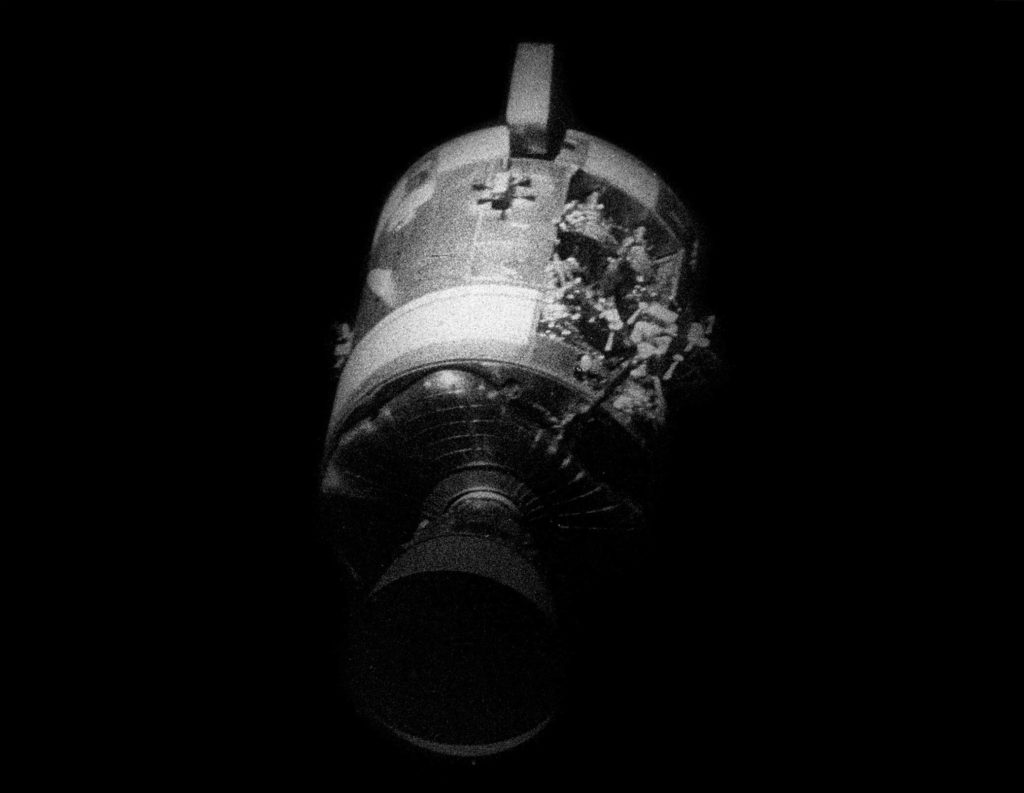
Photo credit: NASA
According to the analysts, these pictures also showed the antenna damage and possibly an upward tilt to the fuel cell shelf above the oxygen tank compartment.
With the lunar module jettisoned, the command module Odyssey began its lone re-entry through the atmosphere.
The re-entry on a lunar mission was normally accompanied by about four minutes of communications blackout caused by ionization of the air around the Command Module. The blackout in Apollo 13’s re-entry lasted six minutes, which was 87 seconds longer than had been expected. The possibility of heat-shield damage from the oxygen tank rupture heightened the tension of the blackout period.
Odyssey regained radio contact and splashed down safely in the South Pacific Ocean, southeast of American Samoa and 6.5 km (3.5 nmi) from the recovery ship, USS Iwo Jima.
The crew was in good condition except for Haise, who was suffering from a serious urinary tract infection because of insufficient water intake. To avoid altering the trajectory of the spacecraft, the crew had been instructed to temporarily stop urine dumps. A misunderstanding prompted the crew to store all urine for the rest of the flight.
Splashdown and recovery, South Pacific Ocean, southeast of American Samoa and 6.5 km (3.5 nmi) from the recovery ship, USS Iwo Jima.
Photo credits: NASA

Image credit: NASA
Apollo 13 was called a successful failure. In that it returned safely, but never made it to the Moon. None of the Apollo 13 astronauts ever flew in space again. Fred Haise was going to go back to the Moon on Apollo 18, but his mission was cancelled because of budget cuts. Jack Swigert left the astronaut corps and was elected to Congress from the state of Colorado, but he died of cancer before he was able to take office. Jim Lovell retired from the Space program in 1973. Ken Mattingly orbited the Moon as Command Module Pilot of Apollo 16, and flew the space shuttle, having never gotten the measles. Gene Kranz retired as director of flight operations not long after Apollo 13.
Sources:
wikipedia.org/wiki/Apollo_13, apolloarchive.com, moon5.kedzich.com, flickr.com/photos/projectapolloarchive, spaceflight.nasa.gov/gallery/images/apollo
Images and audio © NASA
Built with Campaign Pro.
If you’re a Campaign Pro’er you can use this template by heading over to the main Campaign Pro website.




